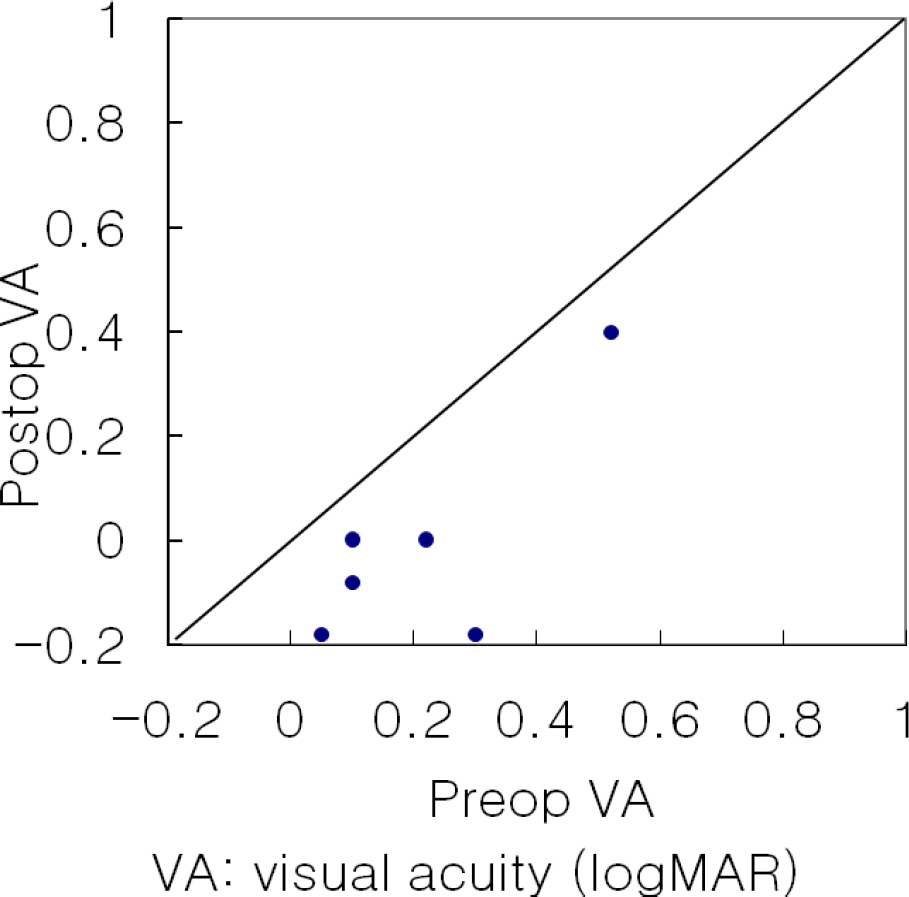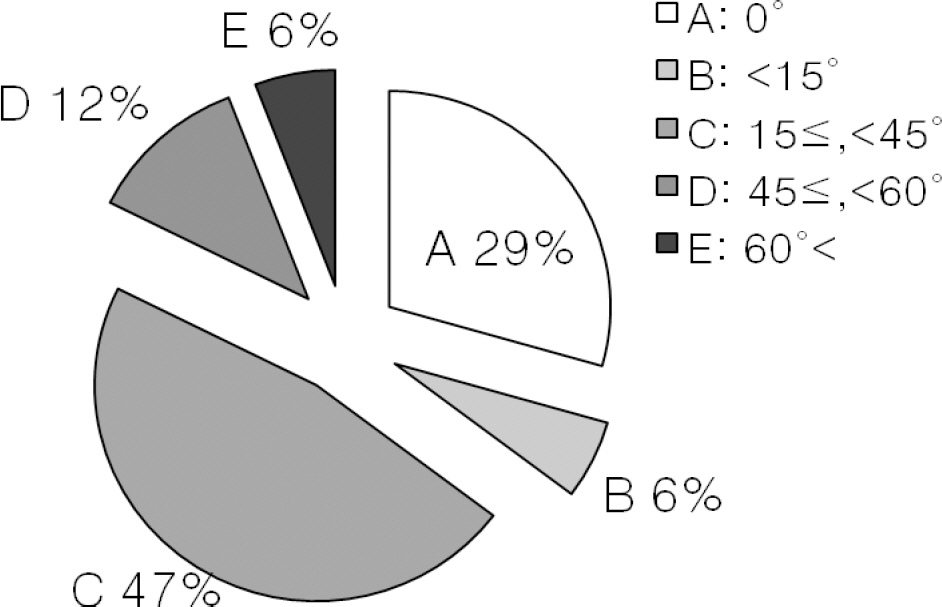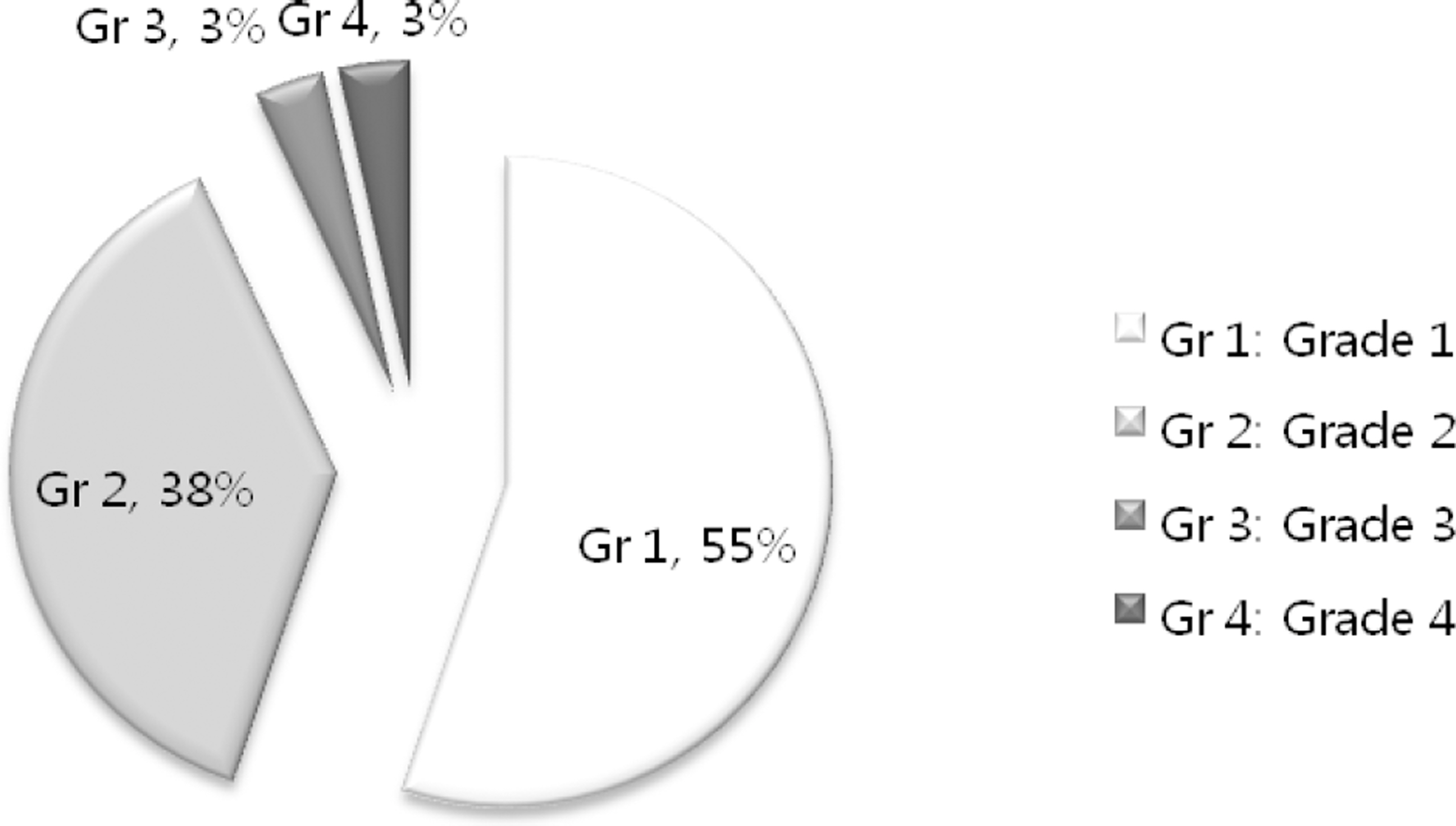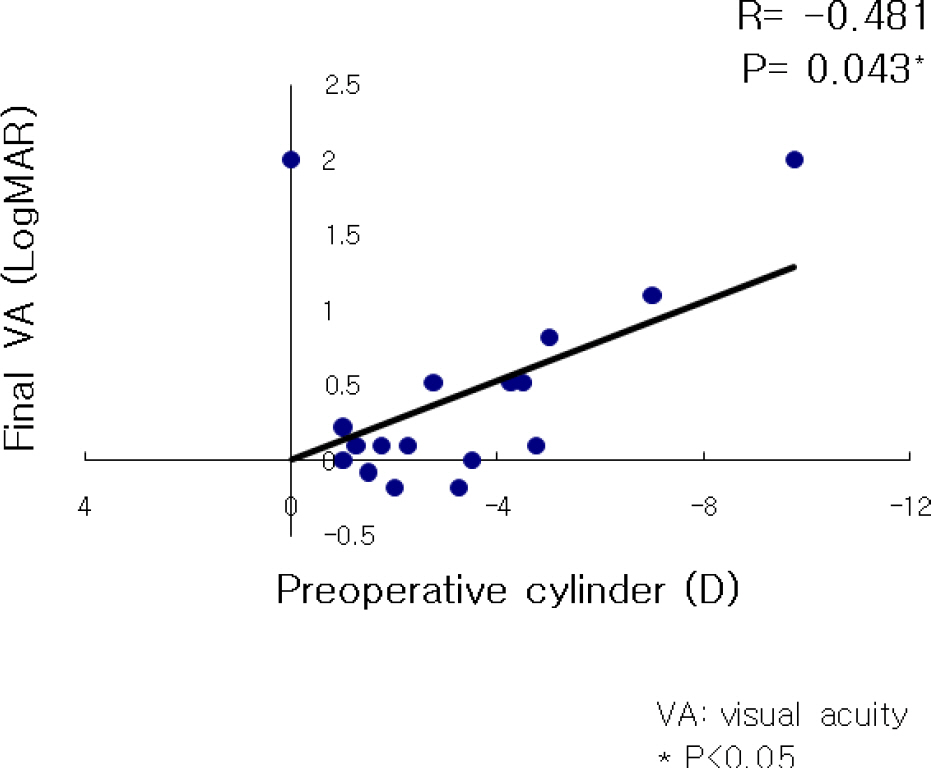J Korean Ophthalmol Soc.
2008 Jun;49(6):897-903. 10.3341/jkos.2008.49.6.897.
The Surgical Outcomes of Simple Keratectomy for Limbal Dermoids
- Affiliations
-
- 1Department of Ophthalmology, Seoul National University College of Medicine, Seoul, Korea. ysyu@snu.ac.kr
- 2Seoul Artificial Eye Center, Seoul National University Hospital Clinical Research Institute, Seoul, Korea.
- KMID: 2110869
- DOI: http://doi.org/10.3341/jkos.2008.49.6.897
Abstract
-
PURPOSE: To evaluate the results of simple keratectomy for limbal dermoids.
METHODS
We reviewed the ocular records of 29 consecutive patients with limbal dermoids who had undergone simple keratectomy in Seoul National University Children's hospital from 1989 to 2006. The preoperative and postoperative visual acuity and astigmatism levels as well as the cosmetic outcomes were measured.
RESULTS
The mean age at surgery was 28 months (range, 6~70 months), and the mean follow-up period was 56 months (range, 18~168 months). The mean visual acuity at the last follow-up was 20/30. The mean preoperative and postoperative cylinder was -2.64D and -2.12D, respectively, in the affected eye (p=0.064); and -0.79D and -0.43D, respectively, in the fellow eye (p=0.149). There was a significant correlation between preoperative astigmatism and the final visual acuity in the involved eye. No opaque lesions were visible at a distance of 1 meter in 16 of the 29 eyes (55.2%), and there were no significant complications related to the surgery.
CONCLUSIONS
Simple keratectomy of limbal dermoids can be a good surgical technique to get a cosmetically acceptable corneal clarity without complication.
Figure
Cited by 1 articles
-
Clinical Features of Conjunctival Dermolipoma
Hee Jun Song, Ho Sik Hwang, Yoon Yang Jung, Ji Won Kwon
J Korean Ophthalmol Soc. 2018;59(12):1108-1113. doi: 10.3341/jkos.2018.59.12.1108.
Reference
-
References
1. Dailey EG, Lubowitx RM. Dermoids of the limbus and cornea. Am J Ophthalmol. 1962; 53:661–5.
Article2. Mansour AM, Barber JC, Reinecke RD, Wang FM. Ocular choristomas. Surv Ophthalmol. 1989; 33:339–58.
Article3. Mohan M, Mukherjee G, Panda A. Clinical evaluation and surgical intervention of limbal dermoid. Indian J Ophthalmol. 1981; 29:69–73.4. Panton RW, Sugar J. Excision of limbal dermoids. Ophthalmic Surg. 1991; 22:85–9.
Article5. Sen DK, Mohan H, Gupta DK. The syndrome of Goldenhar. Acta Ophthalmol. 1969; 47:1044–8.
Article6. Baum JL, Feingold M. Ocular aspects of Goldenhar’s syndrome. Am J Ophthalmol. 1973; 75:250–6.
Article7. McKendrick AM, Brennan NA. Clinical evaluation of refractive techniques. J Am Optom Assoc. 1995; 66:758–65.8. Harris WF, Malan DJ, Rubin A. Ellipsoidal confidence regions for mean refractive status. Optom Vis Sci. 1991; 68:950–3.
Article9. Harris WF. Dioptric power: its nature and its representation in three- and four-dimensional space. Optom Vis Sci. 1997; 74:349–66.
Article10. Harris WF. Representation of dioptric power in Euclidean 3-space. Ophthalmic Physiol Opt. 1991; 11:130–6.
Article11. Robb RM. Astigmatic refractive errors associated with limbal dermoids. J Pediatr Ophthalmic Strabismus. 1996; 33:241–3.
Article12. Scott JA, Tan DT. Therapeutic lamellar keratoplasty for limbal dermoids. Ophthalmology. 2001; 108:1858–67.
Article13. Cuttone JM, Durso F, Miller M, Evans LS. The relationship between soft tissue anomalies around the orbit and globe and astigmatic refractive errors: a preliminary report. J Pediatr Ophthalmol Strabismus. 1980; 17:29–36.
Article14. Panda A, Ghose S, Khokhar S, Das H. Surgical outcomes of epibulbar dermoids. J Pediatr Ophthalmol Strabismus. 2002; 39:20–5.
Article15. Shen YD, Chen WL, Wang IJ. . Full‐ thickness central corneal grafts in lamellar keratoscleroplasty to treat limbal dermoid. Ophthalmology. 2005; 112:1955.16. Watts P, Michaeli-Cohen A, Abdolell M, Rootman D. Outcome of lamellar keratoplasty for limbal dermoids in children. J AAPOS. 2002; 6:209–15.
Article17. Yoon CK, Park SW, Song BY. The Role of Ultrasound Biomicroscopy in Operation for Limbal Dermoid. J Korean Ophthalmol Soc. 2004; 45:364–9.






